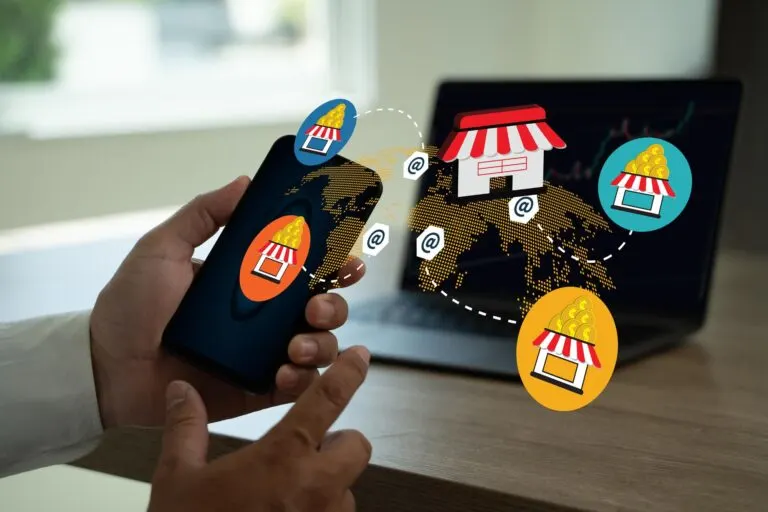Multichannel E-commerce Strategy: Reaching More Customers
1. Introduction to Multichannel E-commerce Strategy
Defining Multichannel E-commerce
Multichannel e-commerce refers to the selling of products on multiple platforms such as websites, social media, and marketplaces to engage with more customers. Companies use IT consulting, cybersecurity, and cloud computing to guarantee smooth operations and data security. With IT services, network security, and managed IT services, companies can boost efficiency, security, and scalability.
Evolution of E-commerce Strategies
E-commerce strategies have come a long way from the simple days of having just a website. Now, it’s all about meeting customers where they are, be it on Instagram, Amazon, or even through voice commerce. The game has evolved, and multichannel strategies are the MVPs.

2. Understanding the Importance of Reaching More Customers

Expanding Market Reach
It’s like growing your social network but better – more customers mean accessing new markets, demographics, and opportunities you never even knew were there. The more, the merrier (and profitable)!
Growing Sales Opportunities
More customers translate to more chances to make a sale—it’s basic arithmetic. Through IT consulting, cloud computing, and IT services, companies can maximize their presence across multiple channels, casting a broader net to entice potential buyers. Robust cybersecurity, network security, and data security protocols provide secure transactions, while managed IT services and IT support maintain smooth operations. Advanced software development and creative IT solutions enable companies to convert window shoppers into loyal customers more efficiently.
3. Choosing the Right Channels for Your Multichannel Strategy
Researching Potential Channels
Imagine this as a dating app for your business. Swipe left on channels that don’t match your brand values or target audience, and swipe right on those that provide the most potential for growth. Research is the key to discovering your e-commerce soulmates.
Assessing Channel Fit for Your Business
Not all channels are a match made in heaven for your company. Take into consideration audience demographics, cost-effectiveness, and product nature to find out which channels will provide the best ROI for you. It’s all about finding the best fit.

4. Seamless Integration Across Channels Implementation
Benefits of Integrated Channels
When your channels play well together, magic occurs. Integrated channels translate to simplified operations, seamless customer experiences, and improved data insights. It’s like having your e-commerce cake and eating it too.
Challenges of Channel Integration
Of course, nothing worth doing is ever easy. From technical issues to ensuring brand consistency across channels, channel integration can be a difficult nut to crack. But hey, the payoff of a smooth multichannel strategy is totally worth it.
5. Harnessing Data and Analytics for Hyper-Relevant Customer Engagement
Role of Data in Multichannel Strategy
In the chaotic world of e-commerce, data is the superhero that helps business make sense of customer behaviours, wishes, and trends across channels. Through the power of data, businesses can develop tailored strategies that directly address their audience’s desires and requirements.
Using Analytics for Customer Insights
In the chaotic e-commerce universe, data is the superhero that enables businesses to decipher customer behavior, preferences, and trends on multiple channels. Through the power of data, businesses can create focused strategies that directly address their audience’s desires and aspirations.
6. Multichannel Customer Experience Optimization
Designing a Consistent Brand Experience
Picture your favorite television show changing genres in the middle of the season—disorienting, isn’t it? It’s the same with e-commerce, where a seamless brand experience through all channels is key. IT consulting, cloud computing, and IT services provide smooth integration, while cybersecurity, network security, and data security safeguard customer interactions. With managed IT services, IT support, and IT solutions, companies can improve user experience as well as brand consistency.
Personalization and Customization Strategies
Those days of mass marketing are long over. Consumers today seek individualized experiences tailored to their preferences. Using personalization and customization techniques, firms can establish a closer relationship with customers, resulting in higher loyalty and participation.
7. The Overcoming of Challenges and Pitfalls of Multichannel Strategy
Managing Management Across Channels
Attempting to balance inventory across multiple channels can feel like herding cats – uncontrollable and incoherent. To prevent stockouts and dissatisfied customers, companies must have strong inventory management systems with real-time visibility and control of stock levels.
Overcoming Communication and Coordination Challenges
In a multichannel environment, miscommunication can be disastrous. To avoid confusion and mix-ups, there must be clear communication and coordination among various departments and channels. By promoting collaboration and transparency, companies can provide a smooth customer experience.
8. Future Trends and Innovations in Multichannel E-commerce
Emerging Technologies in E-commerce
From AI chatbots to virtual reality shopping, the future of e-commerce is full of thrilling technological advancements. By keeping up with the times and embracing these new technologies, companies can provide customers with state-of-the-art experiences that differentiate them from others.
Evolution of Consumer Behavior
Similar to fashion trends, consumer behavior is also in a state of continuous evolution. In order to survive in the dynamic environment of e-commerce, companies need to remain sensitive to changing consumer behavior and tastes. By utilizing IT consulting, cloud computing, and IT services, companies can effectively change their strategies, ensuring smooth operations and security. Robust cybersecurity, network security, and data security practices safeguard customer data, while managed IT services, IT support, and cutting-edge IT solutions improve efficiency. A well-executed multichannel e-commerce strategy, supported by software development and data-driven insights, is essential for reaching more customers and maximizing sales. By embracing future trends and innovations, businesses can stay ahead and meet the evolving needs of consumers.



